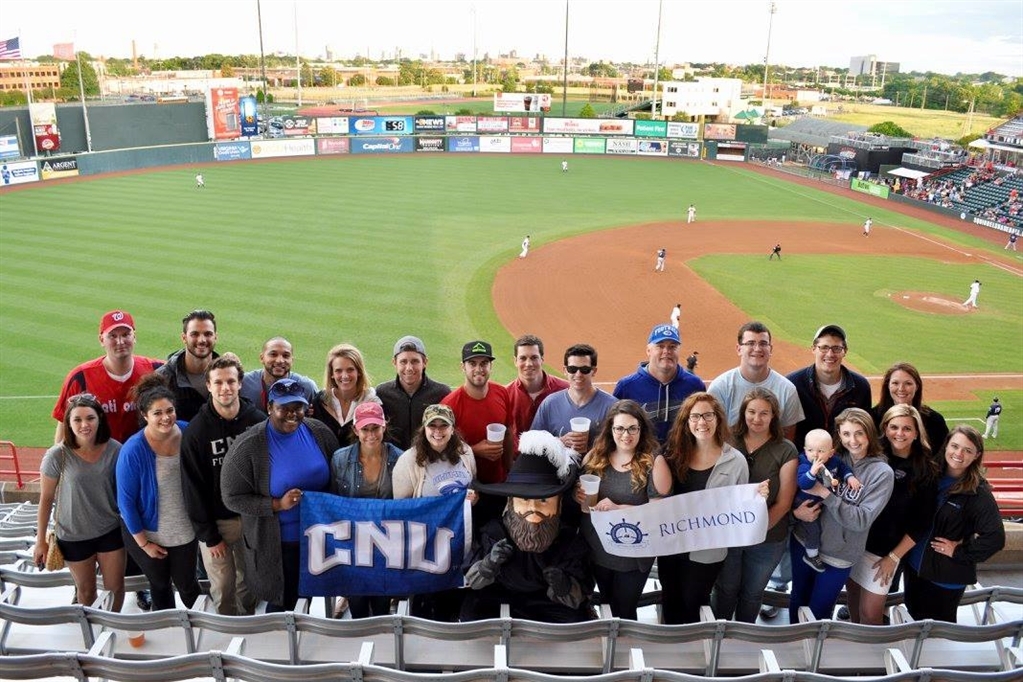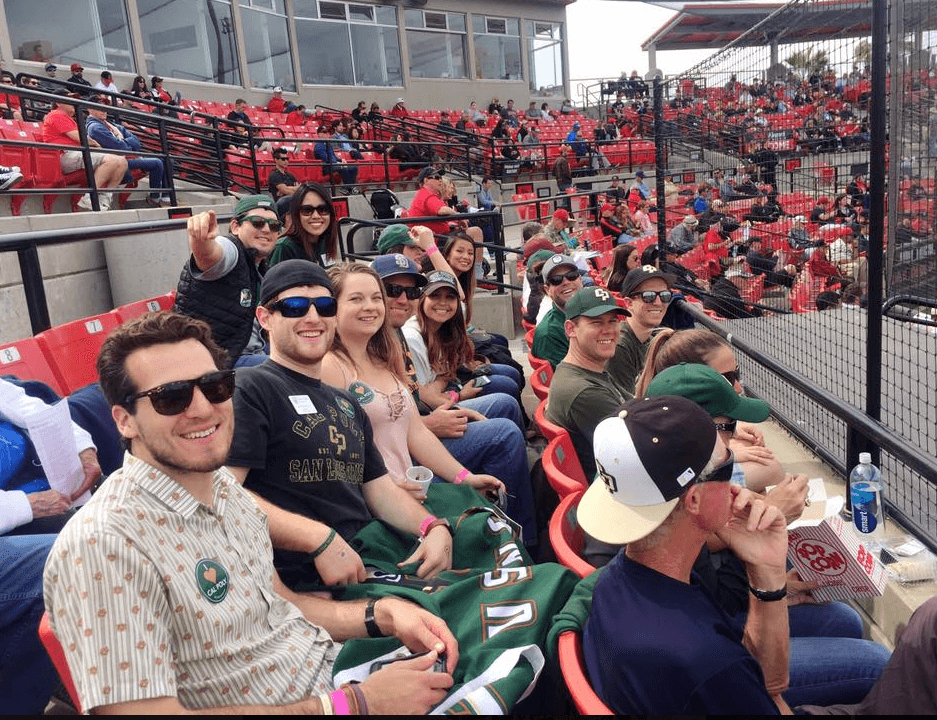How to Win the Most Important Game
What sports teams can tell us about maximizing brand equity

What’s in a (team) name?
To a football fan, a great deal. If you tell a die-hard Seattle Seahawks fan that their team is indistinguishable from the New York Jets you will likely be accosted by an enraged fist or two. In fact, brawls between insult-lobbing spectators of opposing teams are already a common problem at stadiums. Mess with the brand, and you’ll get the hand.
Though these sports fans are extremely passionate about their teams, their affinities are selected for reasons that often seem arbitrary, such as geography or exposure to a team’s performance at a young age. Despite this, the fans' ardor can reach absurd levels—such as the case of Patrick Moeller, an Eagles fan who has spent thousands of dollars to attend team’s every game (home and away) since 2006. Such fans are unlikely to change their team affinity over the span of their lives, nor will they be deterred by a consecutive losing streak. Team affinity seems to be a lifelong, undying, emotional commitment.
For universities, having such a dedicated support base would be a dream come true. But recreating this devotion would entail understanding the science behind why sports teams have such an emotional connection with their audience, and what techniques a university can use to mimic it.
The Science of Us vs Them
Identity formation forms the foundation for such extreme brand loyalty. According to psychological research, an individual’s identity is divided into two components—personal identity and social identity.
While personal identity refers to a person’s self-concept in terms of various personal characteristics (such as kindness, adventurousness, or athleticism), social identity refers to their self-definition in terms of various social groups. This social identity can be expressed in anything from professional organizations to political parties, from religion to race.
Social identity is especially powerful due to its distinction between its members and outsiders, between the desirable “in-group” and the frowned-upon “out-group.” Though this discrimination against outsiders may seem like an archaic remnant of tribal times, one only has to look at the inexhaustible tirade of nationalists or the vehement rivalries between politicians to understand the power of social identity. The ideology of “us” vs “them” has been driving humans for millennia.
Mobilize Social Identity
Fortunately, your university already has access to the robust resource of social identity. Your students and alumni form their own overarching social group, united by the commonality of having all attended the same university. The power of these social groups can be seen at any competitive event, from robotics tournaments to lacrosse matches. Students of rival universities cheer raucously and passionately for their own group—while jeering and taunting the opposition. Conversely, the unity within each university’s social group can be seen at uplifting events like reunions or commencements, in which alumni connect deeply on the basis of their shared experiences.
Your alumni network is one of your most valuable assets. After all, according to the boasts of prestigious universities like Yale, alumni are for life. So how can universities maximize their life-long involvement? In “Building Service Brands via Social Identity: Lessons from the Sports Marketplace,” researchers from the Journal of Marketing Theory and Practice identify four factors that can improve the brand equity of service-based organizations such as universities, gaining more loyal patrons in the process.

Leverage Your History & Traditions
Sports teams with long and successful histories, such as the New York Yankees or the Los Angeles Dodgers, tend to be more valuable than newer teams without a similar legacy. Fans enjoy feeling as if they are a part of history, cheering on centuries of success. Similarly, universities with long-standing histories, such as Oxford or Harvard, have eminent histories that translate into a higher reputation among the public and alumni alike. Feeling like a part of a greater narrative strengthens alumni’s emotional connection with their alma mater, which has been proven to induce giving.
To maximize the effectiveness of legacy, researchers suggest incorporating history and tradition into marketing strategies. For example, tailoring marketing materials to emphasize a university’s legacy, such as providing a timeline of notable events from the university’s founding, will help alumni understand the university’s overarching history and strengthen their social identity. This sense of alumni identity, in turn, imbues alumni with a sense of responsibility to continue the university’s legacy of success as well as establishing an obligation to give back.
CueBack seamlessly integrates digital archives in its engagement platform to specifically remind alumni of the history and traditions that shaped them while they attended their alma mater. They also provide a source of Memory Cues to trigger reminiscing about those times. Bringing your digital archives to life will be particularly appreciated by older alumni (who tend to donate more). Unlike their Millennial counterparts who have 10,000 photos of their college days on the iPhone in their back pocket, older alumni typically have very few photos of their time at college.
Additionally, creating annual “Giving Days” that emphasize the alumni community’s history of giving will further incentivize alumni to contribute. Marketing a legacy of successful giving efforts will remind alumni that they are part of a long tradition of alumni generosity. Social pressures to continue the giving tradition can be a powerful force in encouraging alumni to donate.
Use Rituals to Remind
Rituals are actions that we repeat habitually and continuously, ranging from drinking a glass of warm milk before bed, to greeting close friends with an elaborate handshake. For universities, the use of rituals can serve as a reminder of long-standing values or as a manifestation of school spirit. For example, UCLA’s ritual of “Bruintizing” its new students during orientation asks them to dip their hands in the water of the campus fountain while saying a pledge about their future as UCLA students. This ritual strengthens the new Bruins’ connection to their university, as the “Bruinization” carries the symbolic meaning of a commitment to be successful students. Furthermore, because every student experiences this ritual upon their decision to attend UCLA, the “Bruinization” unites the university community, instilling key values such as integrity and academic success.
Other rituals, such as the University of Chicago’s scavenger hunt or Dartmouth College’s Polar Bear Swim, have similar intentions, with the repetitive action symbolizing values important to the university, such as curiosity or perseverance. By giving a largely intangible experience (the impact of a university education) a tangible outlet in the form of a ritual, universities connect students and alumni to the institution’s generations of history and provide a continuous reinforcement of values.
Furthermore, rituals can be used to harness emotions tied to past experiences to influence current ones. For example, if you always start your athletic events by performing the school anthem or chant, students and alumni will associate this chant with other fun school games they have attended. The routine of the ritual will bring back their positive experiences with past games, and lead these experiences to subconsciously improve their current emotions.

Mobilize Group Experiences
Anyone who has ever been to an athletic event at a stadium understands the deep sense of belonging. Fans of the same team easily make conversation with one another despite being perfect strangers; people of all races, classes, and creeds briefly come together as one. This inclusive kinship is part of the psychological experience of being a fan, and contributes to a greater sense of self—one that is psychologically intertwined with the fate of the team and other fans. The team’s victories or losses have a strong impact on the community’s collective identity, creating a palpable emotional intensity in the stands.
The influence of social groups on shared identity can then be translated to alumni relations. The researchers from the Journal of Marketing Theory and Practice state that a major trait of shared social identity is that “members of the group vicariously participate in group accomplishments.” Think of how commonly you hear the phrase “We won the game yesterday” when fans refer to their favorite sports team’s victories.
Whenever your university’s alumni achieves a notable accomplishment, whether it is a breakthrough in pharmaceutical research, an Olympic medal, an Emmy award, or a Nobel prize nomination, it is crucial to publicize this accomplishment and share it with other alumni. Ideally, this information should be published on a platform that captures the history of your university so that this valuable information does not get buried under a flood of social media content and is never seen again. Publicizing your university’s accomplishments will imbue your alumni with a stronger sense of pride and emotional connection to your institution—which will then translate into higher engagement and stronger alumni identity.
Harness Physical Space
From the ivy-covered walls of Wrigley Field to the iconic friezes of Yankee Stadium, sports stadiums carry a physical reminder of the memories, victories, and deep emotions that fans have experienced there. These stadiums are where a profound sense of community is formed, and are a place where group identity is particularly strong.
Similarly, for many universities, physical facilities serve as the symbols of the core brand experience with which alumni have the strongest associations. Research shows that returning to a physical space in which one has many experiences will strengthen autobiographical memory and place-related identity. When your alumni return to campus, the ‘place’ context will trigger the recollection of the positive memories they have made at your university. These positive memories will then lead alumni to remember your university’s impact on their life, and remind them of the value of your brand.
Reunions are one of the most effective ways to bring alumni back to campus. They offer alumni a direct benefit (the opportunity to reconnect with old friends and classmates) while encouraging them to return to the halls of their alma mater. By allowing social connections to be remade within your university’s campus, you employ the power of physical space to strengthen group identity. In fact, due to the ability of social connections to encourage positive group behavior, major reunion years have been proven to correlate strongly with increased giving.
To further maximize emotional connection, your university could offer alumni tours of the university, allowing alumni to step back into the buildings of their past while displaying how the campus has changed over the years. The more alumni see of your campus, the more memories they will recover of the good times they had there, and the more they will be inclined to consider your university as part of their identity. After all, when your alumni remember their time in college, they visualize your university’s campus in their minds—and you want that image to be as clear as possible.

A Winning Game Plan
There are currently 1.5 million nonprofits competing for your alumni’s donation dollars. They all may be worthwhile causes, but meanwhile, over 25% of private universities are running at a deficit. On average, each donor chooses to support only 4.5 charities. Those are tough odds. Moreover, not only does a university need to battle hard to reach the final four or five, they actually need to be in the top two of their alumni’s preferred charities. Because, just like in sports, the spoils accrue disproportionately at the very top.
A proactive strategy is required to ensure that your university is top-of-mind and first-to-checkbook when your alumni consider their charitable contributions for the year. Reinforcing your university’s brand and providing personalized alumni engagement that focuses on strengthening the emotional connection and alumni identity are critical elements of a winning game plan.
As stated by A. Bartlett Giamatti, former president of Yale and commissioner of the MLB, “the university is our culture’s assertion that what is made by the mind has value and conveys value.” Convey your university’s value by employing your institution’s history, rituals, community experiences, and campus to reinforce your brand, and ensure that your alumni always play for your team.
Stay ahead of the curve with CueBack
The world of advancement is changing. Don’t get left behind. Stay ahead of the curve with insights from forward thinkers in the industry who are paving the way for tomorrow’s advancement professional leaders.